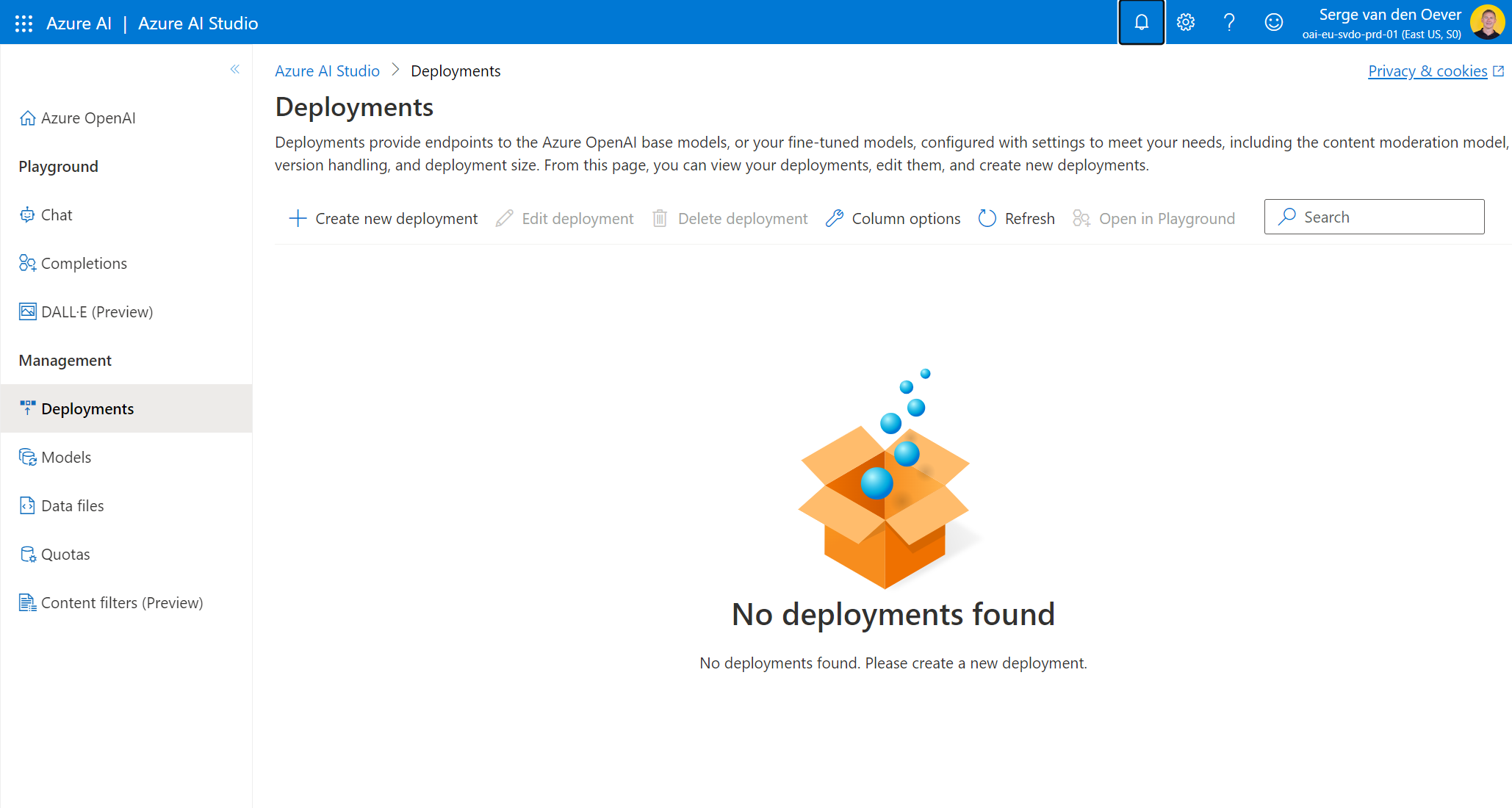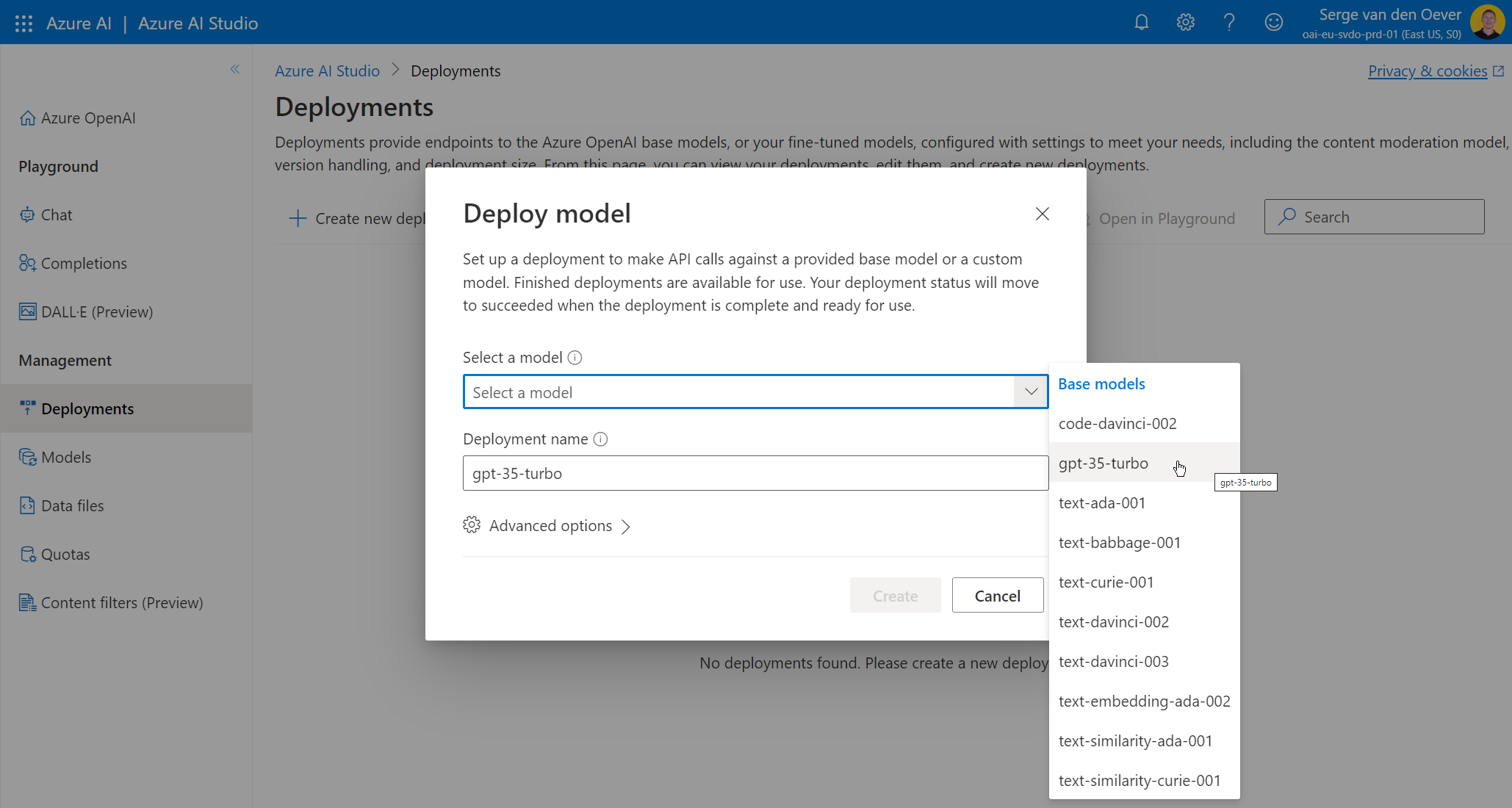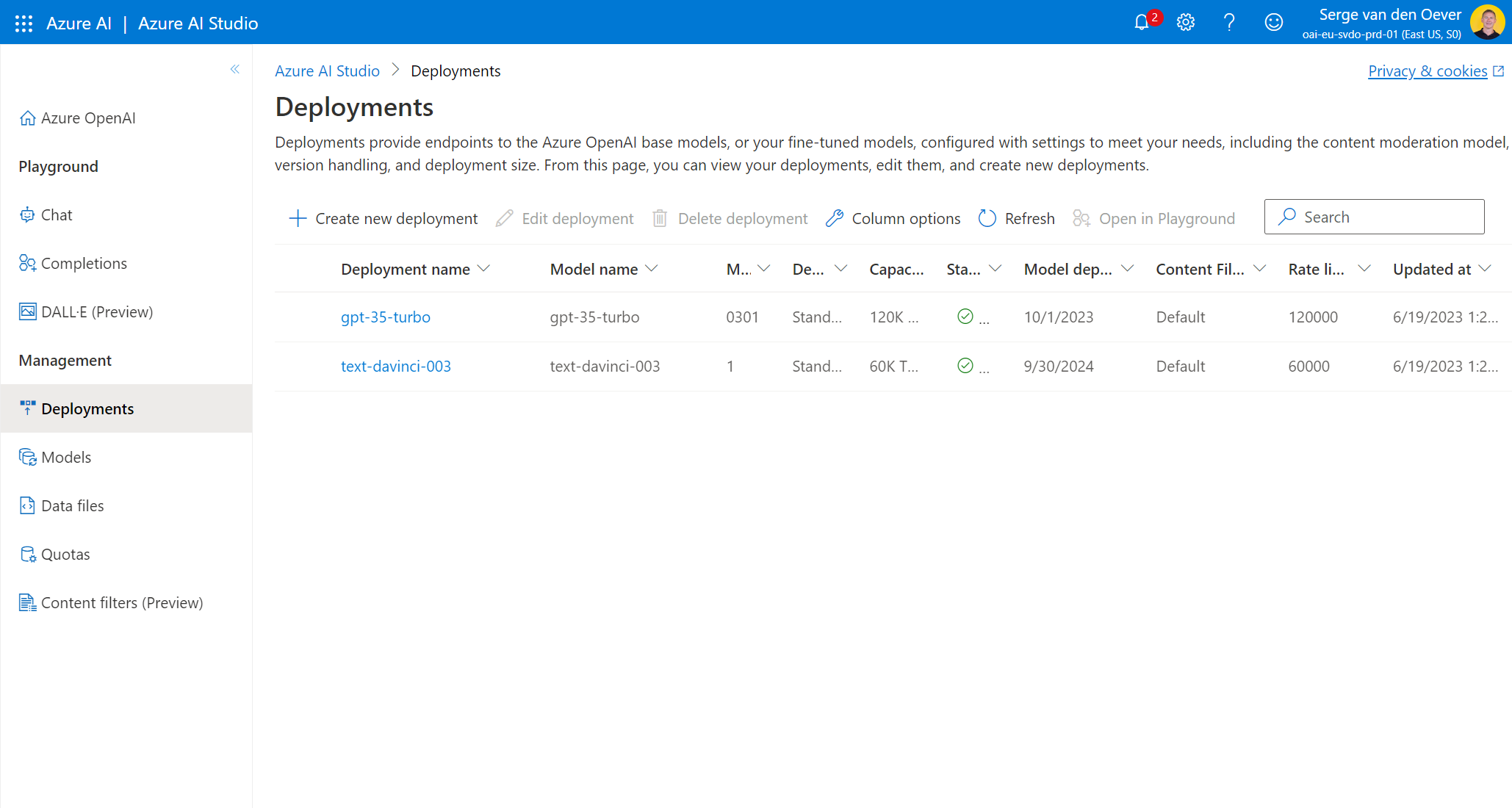models.json
The available models.
The models.json file lives in the root of the project folder. This file contains model configurations, the default model to use, and configuration per recipe of the model to use.
The structure of models.json
The models.json file contains a JSON object with the following structure:
{
"defaultModel": "<model-name>",
"recipeDefaultModel": {
"<recipe-name>": "<model-name>",
:
},
"modelConfigurations": {
"<model-name>": {
"description": "Description of the model",
"provider": "Azure | OpenAI",
"type": "completion | chat.completion",
"completion": {
"model": "model-id",
"temperature": 0.7,
"max_tokens": 64,
"top_p": 1,
"frequency_penalty": 0,
"presence_penalty": 0
}
}
}
}
The defaultModel specifies the model name that is used for a recipe when no explicit model name is specified for a recipe in the recipeDefaultModel element.
The recipeDefaultModel element gives the opportunity to specify the default model to use for the specific recipe. So it possible to have each recipe to use its own model, e.g.:
"recipeDefaultModel": {
"eli5": "azure-gpt-35",
"starwars-story": "azure-davinci",
"bike-description": "openai-gpt-4"
},
The modelConfigurations element contains a configuration per model, where each model has a name, a description, a provider (Azure and OpenAI for now), and the completion configuration.
There are two types of completions for the Azure and OpenAI providers: completion and chat.completion. The completion type is used for completion models like text-davinci-003, and the chat.completion type is used for chatbot models that are also really good at completion like gtp-3.5-turbo and gpt-4.
See the OpenAI API documentation for more information about the model configuration fields.
Note that the completion section is passed to the Azure and OpenAI APIs "as"is".
Override the default model for a recipe
On execution of a recipe, the default model configuration can be overridden using the --model-override option of the ai-writer command. For example, to use the OpenAI gpt-4 model, execute the following command:
npx ai-writer eli5 --topic elephant --model-override openai-gpt-4 --output eli5/elephant
Example model.json file
The example model.json file delivered by AI-Writer has support for the following model configurations:
azure-gpt-4- uses Azure OpenAI Service,chat.completion, and thegpt-4model (publish model by that name)azure-gpt-35- uses Azure OpenAI Service,chat.completion, and thegpt-35-turbomodel (publish model by that name)azure-davinci- uses Azure OpenAI Service,completion, and thetext-davinci-003model (publish model by that name)openai-gpt-4- uses OpenAI API,chat.completion, and thegpt-4modelopenai-gpt-35- uses OpenAI API,chat.completion, and thegpt-3.5-turbomodelopenai-davinci- uses OpenAI API,completion, and thetext-davinci-003model
The models.json configuration is as follows:
{
"defaultModel": "azure-gpt-35",
"recipeDefaultModel": {
"eli5": "azure-gpt-35",
"starwars-story": "azure-gpt-35",
"bike-description": "azure-gpt-35"
},
"modelConfigurations": {
"azure-gpt-4": {
"description": "Azure OpenAI gpt-4",
"provider": "Azure",
"type": "chat.completion",
"completion": {
"model": "gpt-4",
"max_tokens": 1000,
"temperature": 0.0,
"top_p": 1,
"presence_penalty": 0.0,
"frequency_penalty": 0.0
}
},
"azure-gpt-35": {
"description": "Azure OpenAI gpt-35-turbo",
"provider": "Azure",
"type": "chat.completion",
"completion": {
"model": "gpt-35-turbo",
"max_tokens": 1000,
"temperature": 0.0,
"top_p": 1,
"presence_penalty": 0.0,
"frequency_penalty": 0.0
}
},
"azure-davinci": {
"description": "Azure OpenAI text-davinci-003",
"provider": "Azure",
"type": "completion",
"completion": {
"model": "text-davinci-003",
"max_tokens": 1000,
"temperature": 0.0,
"top_p": 1,
"presence_penalty": 0.0,
"frequency_penalty": 0.0
}
},
"openai-gpt-4": {
"description": "OpenAI gpt-4",
"provider": "OpenAI",
"type": "chat.completion",
"completion": {
"model": "gpt-4",
"max_tokens": 1000,
"temperature": 0.0,
"top_p": 1,
"presence_penalty": 0.0,
"frequency_penalty": 0.0
}
},
"openai-gpt-35": {
"description": "OpenAI gpt-3.5-turbo",
"provider": "OpenAI",
"type": "chat.completion",
"completion": {
"model": "gpt-3.5-turbo",
"max_tokens": 1000,
"temperature": 0.0,
"top_p": 1,
"presence_penalty": 0.0,
"frequency_penalty": 0.0
}
},
"openai-davinci": {
"description": "OpenAI text-davinci-003",
"provider": "OpenAI",
"type": "completion",
"completion": {
"model": "text-davinci-003",
"max_tokens": 1000,
"temperature": 0.0,
"top_p": 1,
"presence_penalty": 0.0,
"frequency_penalty": 0.0
}
}
}
}
Modify this file to your own needs.
Azure OpenAI Service models
On Azure you need to deploy models explicitly by a name that you have to choose yourself. This deployment is done in Azure AI Studio under Deployments:

When creating a model deployment you can select one of the base models. Where possible use the samen model name as the base models:

For each model that you want to access from the models.json file, create a corresponding model deployment:
